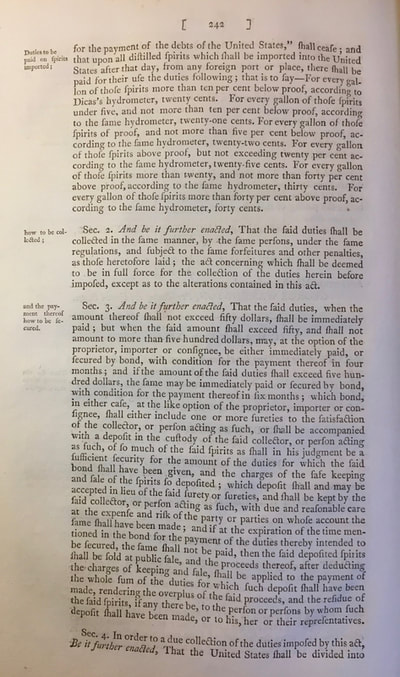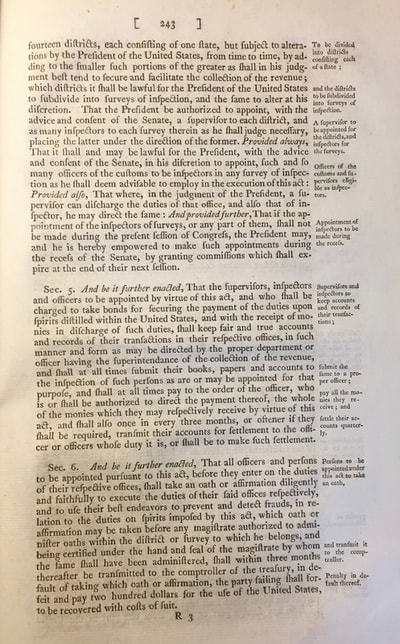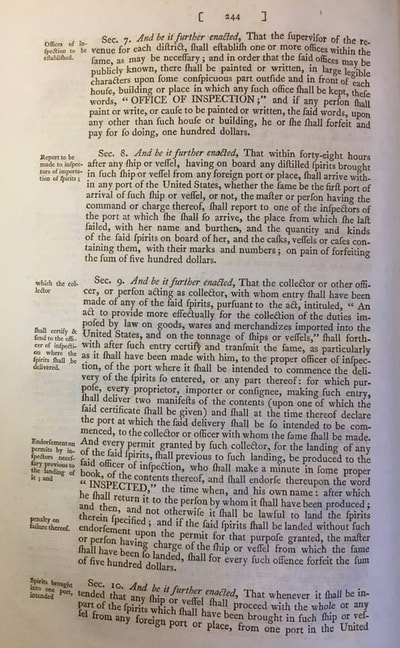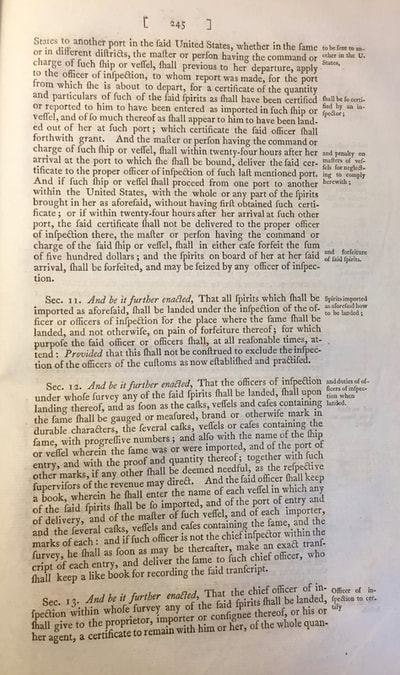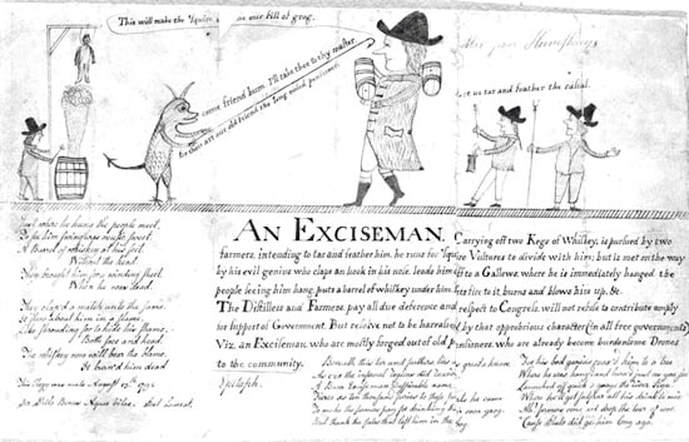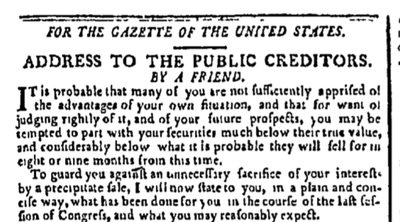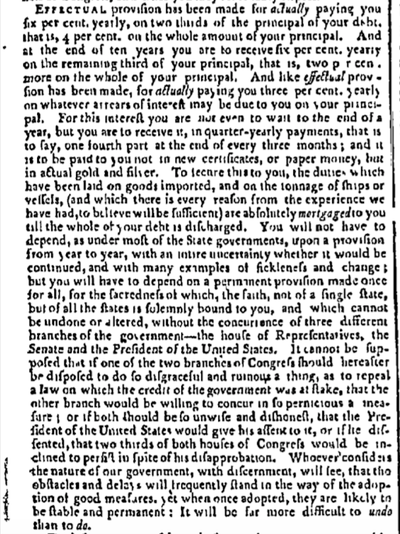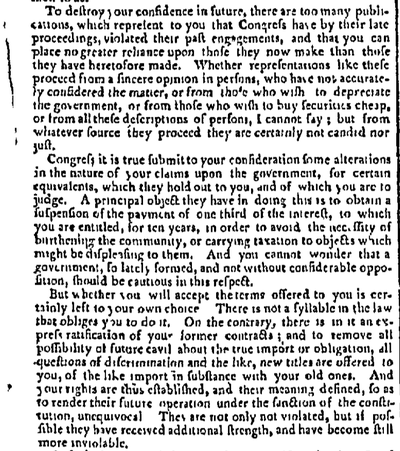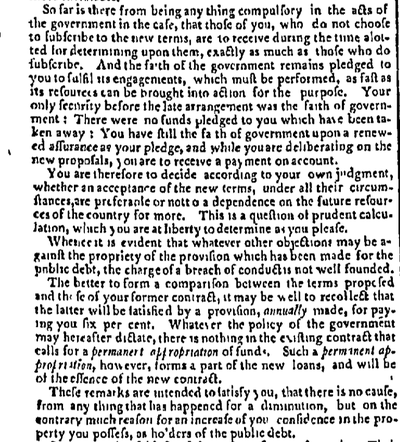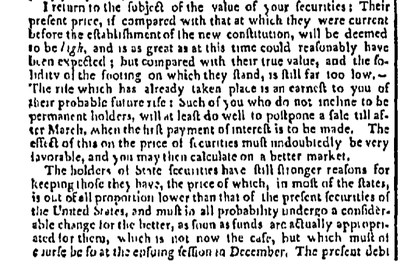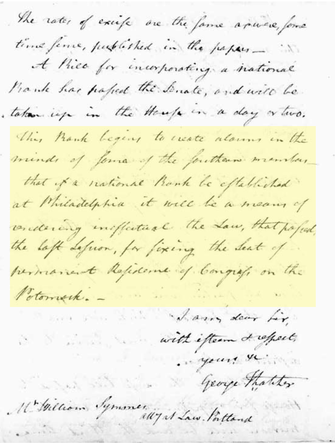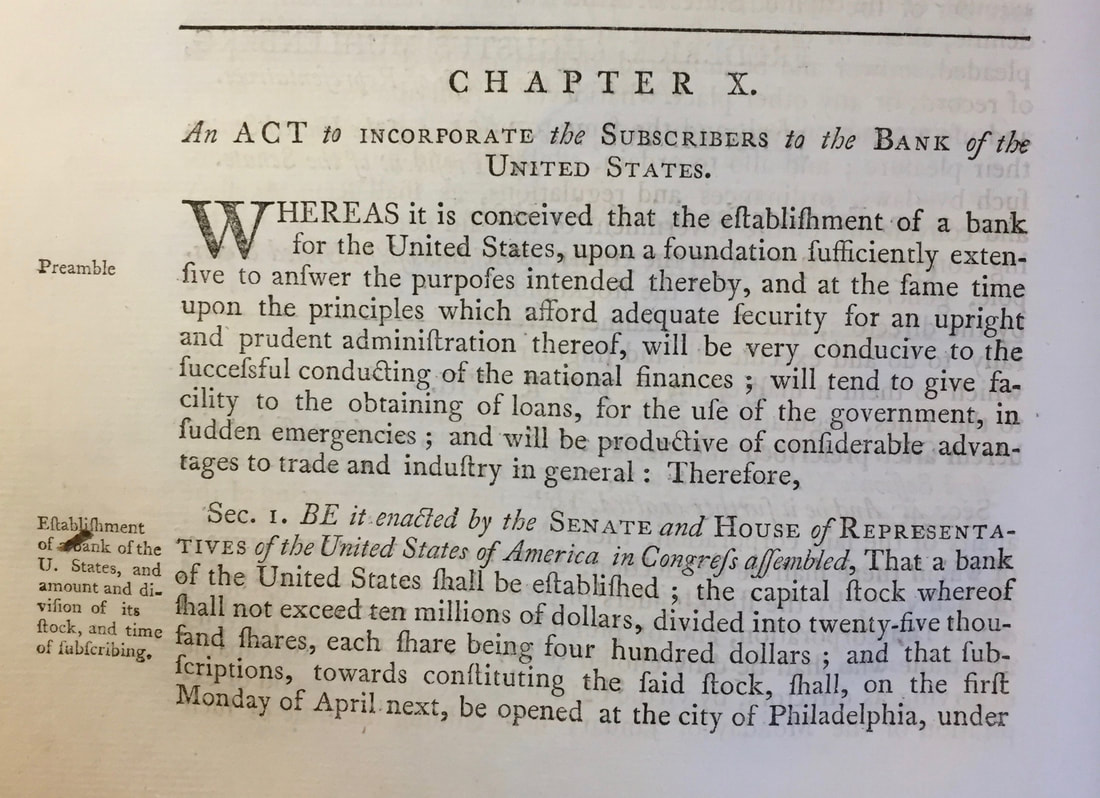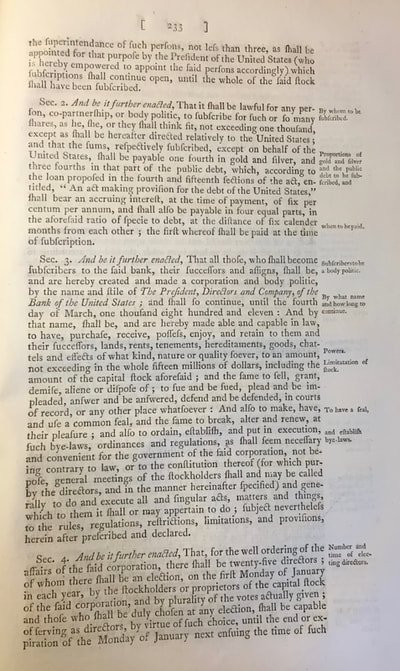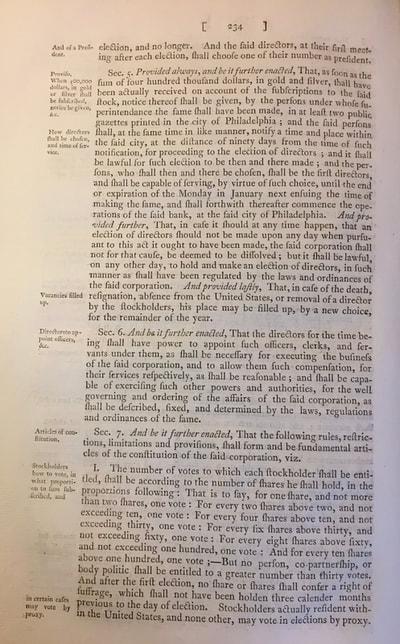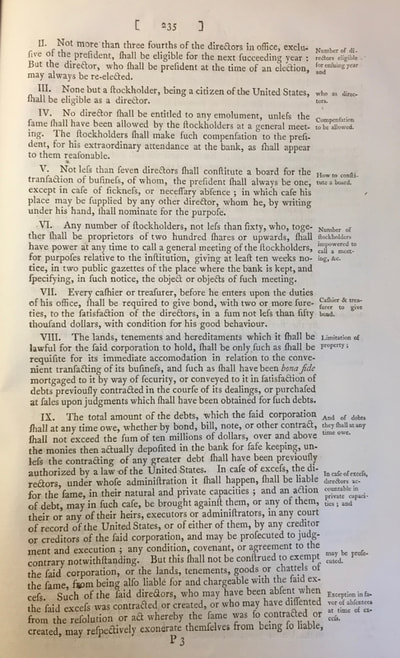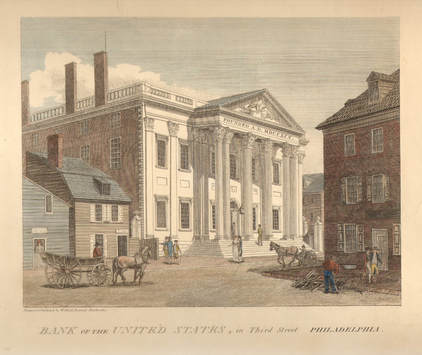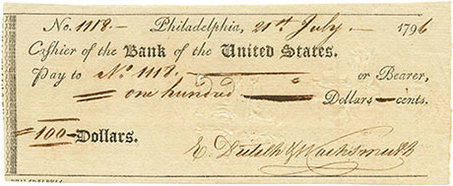Click to listen to clip from Hamilton, the musical:
|
Results of the Funding Act:
|
After taking responsibility for the state debt, the federal government created additional sources of revenue in the form duties. The most controversial of these was the excise tax on whisky, which culminated in the Whiskey Rebellion of 1794.
|
The Excise Tax:
The Distillers and Farmers pay all due deference and respect to Congress, will not refuse to contribute amply for support of Government But resolve not to be harrassed by the opprobrious character (in all free governments) Viz. an Exciseman. |
Economic Centralization:
With their debt assumed, states could lower taxes. Assumption therefore resulted in significant economic centralization, a largely permanent consequence.
U.S. Debt, 1790 vs. 1796[31, 32]
though obstacles and delays will frequently stand in the way of the adoption of good measures, yet when once adopted, they are likely to be stable and permanent. It will be far more difficult to undo than to do. |
|
The First Bank of the United States
“The effect of the funding system, and of the Assumption, would be temporary; it would be lost with the loss of the individual members whom it has enriched, and some engine of influence more permanent must be contrived, while these myrmidons were yet in place to carry it through all opposition. This engine was the Bank of the United States.” - Thomas Jefferson, 1792
Hamilton’s next focus became establishing a national bank. Such an institution would complement his funding system by facilitating the circulation of credit and further nationalizing the economy. The proposal, however, reignited intense political discord.
This Bank begins to create alarms in the minds of some of the southern members that if a national bank be established at Philadelphia it will be a means of rendering ineffectual the Law, that passed the last Session, for fixing the seat of permanent Residence of Congress on the Potomack." |
Bank Act of 1791: |
|
|
*All photographs of acts from the third session are for research purposes ONLY. Source: The Boston Athenaeum.
|


